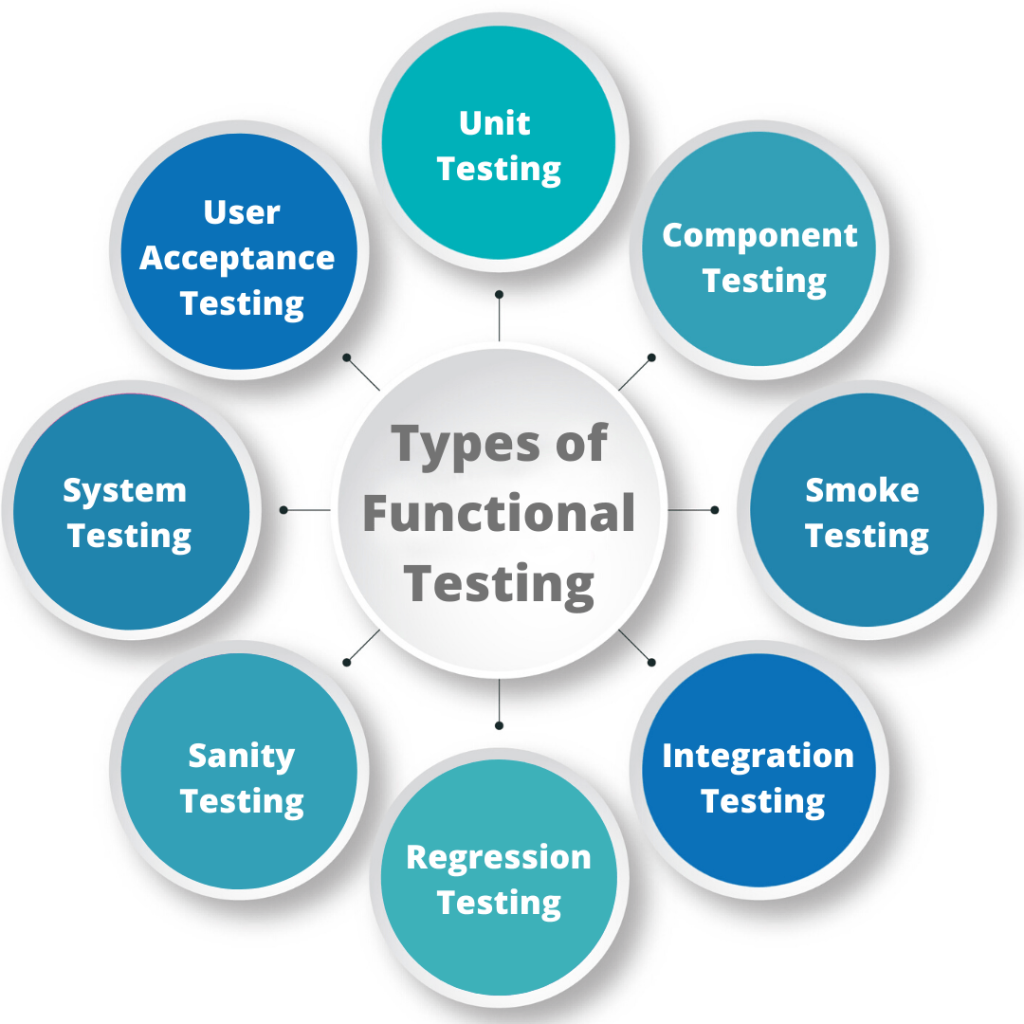
Hi Everyone,
This is Ravi and In the world of software development, ensuring the quality and reliability of software applications is paramount. This is where software testing comes into play. In this comprehensive guide, we will delve into the essentials of software testing, exploring its various types, methodologies, advantages, and disadvantages. We’ll also answer some frequently asked questions to give you a well-rounded understanding of this critical process.
What is Software Testing?
Software testing is a systematic process used to evaluate and verify that a software application or system meets specified requirements and functions correctly. The main objective of software testing is to identify defects and ensure the final product is reliable, secure, and performs as expected. Testing can be performed manually or with the aid of automated tools.
Different Types of Software Testing

Manual Testing: Human testers manually execute test cases without using automation tools. This type of testing involves a tester acting as an end-user to validate the application’s functionality.
Automated Testing: Automated tools are used to execute test cases. Automated testing is particularly beneficial for repetitive but necessary tasks and for extensive tests that would be difficult to perform manually.
Black Box Testing: This testing method focuses on testing the software’s functionality without any knowledge of the internal code structures. Testers validate the inputs and outputs of the system.
White Box Testing: Also known as clear box testing, this method involves testing the internal structures or workings of an application. Testers need to have knowledge of the code and architecture to perform this testing.
Gray Box Testing: A hybrid approach that combines black box and white box testing methodologies. Testers have partial knowledge of the internal workings of the application.
Functional Testing: This testing method validates the software against the functional requirements and specifications.
Non-functional Testing: Evaluates non-functional aspects of the software, such as performance, usability, and reliability.
Integration Testing: Tests the interaction between integrated units or modules to ensure they work together correctly.
Non-integration Testing: Involves testing individual components or modules independently before they are integrated.
Other Types of Testing: Includes specialized testing methods like alpha, beta, compatibility, and recovery testing.
Types of Manual Testing
Manual testing involves human testers manually executing test cases without the use of automated tools. Here are the main types.
Exploratory Testing: Testers explore the application without predefined test cases, identifying bugs through creative and exploratory testing.
Ad-hoc Testing: Informal testing without any planning and documentation, relying on the tester’s understanding of the system.
Acceptance Testing: Conducted to determine if the system satisfies the business requirements. This includes user acceptance testing (UAT) and business acceptance testing (BAT).
Smoke Testing: A preliminary test to check the basic functionality of the application. It is often called “build verification testing.”
Sanity Testing: A subset of regression testing, sanity testing verifies that specific sections of the application work correctly after bug fixes or enhancements.
Types of Black Box Testing
Black Box involves human testers manually executing test cases without the use of automated tools. Here are the main types.
Functional Testing: Validates the software system against the functional requirements/specifications.
Non-Functional Testing: Evaluates non-functional aspects like performance, usability, and reliability.
Regression Testing: Ensures that new code changes do not adversely affect the existing functionality of the application.
User Interface Testing: Verifies the graphical user interface (GUI) to ensure it meets the design specifications and provides a good user experience.
Types of White Box Testing
White Box involves human testers manually executing test cases without the use of automated tools. Here are the main types
Unit Testing: Tests individual units or components of the software. It is usually performed by developers.
Integration Testing: Tests the interaction between integrated units/modules.
Code Coverage Testing: Measures the percentage of code executed by tests, identifying untested parts.
Path Testing: Ensures that all possible paths through the code are tested at least once.
Types of Gray Box Testing
Gray Box involves human testers manually executing test cases without the use of automated tools. Here are the main types
Regression Testing: Ensures code changes don’t negatively impact the application.
Penetration Testing: Tests for security vulnerabilities using both internal and external knowledge.
Matrix Testing: Evaluates the code and data relationships, checking all parameters and their combinations.
Types of Functional Testing

Functional testing is a type of testing that validates the software system against the functional requirements/specifications. It focuses on ensuring that the application behaves as expected. Here are the main types of functional testing.
Unit Testing: Tests individual units or components.
Integration Testing: Tests interactions between integrated units or modules.
System Testing: A complete end-to-end testing of the integrated system.
Acceptance Testing: Determines if the system is ready for deployment.
Types of Non-functional Testing
Performance Testing: Evaluates the speed, responsiveness, and stability of a system under a particular workload.
Load Testing: Determines how the system behaves under an expected load.
Stress Testing: Tests the system under extreme conditions to see how it handles high traffic or data processing.
Usability Testing: Evaluates how easy and user-friendly the software is.
Security Testing: Identifies vulnerabilities, threats, and risks in the software.
Types of Integration Testing
Integration Testing is a type of software testing where individual units or modules of a software application are combined and tested as a group. The purpose of integration testing is to identify defects in the interactions between integrated units or modules. It ensures that different components of the application work together correctly and verifies the functionality, reliability, and performance of the combined units. This type of testing is essential to uncover issues related to data flow, interface communication, and the overall cohesion of the software system.
Big Bang Integration Testing: All components or modules are integrated simultaneously and then tested as a whole.
Top-Down Integration Testing: Testing starts from the top of the module hierarchy and progresses to the lower levels.
Bottom-Up Integration Testing: Testing starts from the bottom of the module hierarchy and progresses to the top.
Hybrid/Sandwich Integration Testing: Combines both top-down and bottom-up integration methods.
Types of Non-integration Testing
Non-integration Testing refers to the testing of individual components or modules of a software application in isolation, without combining them with other components. This type of testing ensures that each component functions correctly on its own before they are integrated with others. Common forms of non-integration testing include unit testing and component testing, where the focus is on validating the functionality, performance, and reliability of each separate part of the application independently.
Unit Testing: Tests individual components or modules independently.
Component Testing: Similar to unit testing but can include multiple units as a single component.
Other Types of Testing
Alpha Testing: Conducted in the development environment by internal staff before the software is released to external users.
Beta Testing: Conducted in the user’s environment by actual users before the final release.
Compatibility Testing: Ensures the software works on different devices, operating systems, browsers, etc.
Recovery Testing: Tests how well the software can recover from crashes, hardware failures, and other problems.
Advantages of Software Testing

Software testing is essential in the software development process, offering numerous benefits.
Quality Assurance: Ensures the product is of high quality and meets user expectations.
Bug Identification: Early identification and fixing of bugs.
Cost-Effective: Reduces the cost of fixing issues by catching them early.
Security: Ensures the software is secure and prevents vulnerabilities.
Customer Satisfaction: Ensures the final product meets the user’s requirements, leading to higher customer satisfaction.
Disadvantages of Software Testing
Software testing, while essential for ensuring the quality and reliability of applications, has several disadvantages. It can be time-consuming, particularly for complex systems, as thorough testing requires significant effort and time. The process is also expensive, involving substantial resources, skilled testers, and sophisticated testing tools. Despite comprehensive testing, it’s impossible to cover every scenario, leaving some defects undetected. Additionally, automated testing relies heavily on tools, which can have limitations, require maintenance, and incur additional costs.
Time-Consuming: Testing can be a lengthy process, especially for complex applications.
Expensive: Requires significant resources, including skilled testers and testing tools.
Not Foolproof: It’s impossible to test every scenario, and some bugs may remain undiscovered.
Dependence on Tools: Automated testing relies on tools, which can have limitations and require maintenance.
Frequently Asked Questions on Types of Software Testing
Q. What is the difference between black box testing and white box testing?
Ans. Black box testing focuses on testing the software without any knowledge of the internal code, while white box testing involves testing the internal structures or workings of an application.
Q. Why is regression testing important?
Ans. Regression testing ensures that new code changes do not negatively impact the existing functionality of the application.
Q. What is the purpose of usability testing?
Ans. Usability testing evaluates how easy and user-friendly the software is, ensuring a good user experience.
Q. How does performance testing differ from load testing?
Ans. Performance testing evaluates the speed, responsiveness, and stability of a system, while load testing determines how the system behaves under an expected load.
Q. What are the benefits of automated testing?
Ans. Automated testing is beneficial for repetitive tasks, improves accuracy, saves time, and allows for more extensive testing.
Q. When should alpha testing be conducted?
Ans. Alpha testing should be conducted in the development environment by internal staff before the software is released to external users for beta testing.
This comprehensive guide covers the various types and methods of software testing, highlighting their advantages and disadvantages, and addressing common questions. By understanding these concepts, you can ensure the quality and reliability of your software applications, ultimately leading to higher customer satisfaction and successful software projects.
Thanks,
